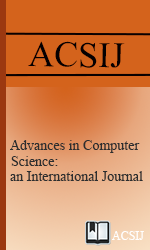Modeling and Simulation of Fire Evacuation in Public Buildings
Abstract
The negative consequence of fire, especially fire in public buildings, brings too much of lost in both human and money. The fire evacuation specialists proposed
many evacuate techniques, methods and policies adapting to the given building, groups of people, or situations.
However, conducting experiments to test these proposed solutions, in the reality, is nearly impossible. Therefore, simulation of fire and fire evacuation to evaluate these proposals is a reasonable solution. This paper proposes an agent-based model for modeling and simulation of fire evacuation in public buildings. The model is implemented and tested using the GAMA agent-based simulation platform.
Keywords
Full Text:
PDFReferences
E. Amouroux, C. Quang, A. Boucher, A. Drogoul, GAMA: an environment for implementing and running spatially explicit multi-agent simulations, in: 10th Pacific Rim International Workshop on
Multi-Agents (PRIMA), Thailand, 2007.
Manh Hung Nguyen, Tuong Vinh Ho and JeanDaniel Zucker. Integration of Smoke Effect and Blind Evacuation Strategy (SEBES) within Fire Evacuation Simulation. Simulation Modelling
Practice and Theory. Volume 36, August 2013, p.44-59, ISSN 1569-190X.
Manh Hung Nguyen, Tuong Vinh Ho and Jean- Daniel Zucker. A Simulation Model for Optimise the Fire Evacuation Configuration in the Metro supermarket of Hanoi. Proceedings of the Ninth
International Conference on Simulated Evolution And Learning (SEAL2012), Hanoi, Vietnam, 16-19 December 2012. L.T. Bui et al. (Eds.): SEAL 2012, LNCS 7673, pp. 470–479, Springer-Verlag Berlin Heidelberg 2012.
Manh Hung Nguyen, Tuong Vinh Ho, Thi Ngoc Anh Nguyen and Jean-Daniel Zucker. Which Behavior is best in a Fire Evacuation: Simulation with the Metro supermarket of Hanoi. Proceedings of The 9th IEEE - RIVF International Conference on Computing and Communication Technology. Ho Chi Minh city,
Viet Nam, p.183 -- 188, February 27 - March 1, 2012.
M. Okaya, T. Takahashi, Human relationship modeling in agentbased crowd evacuation simulation, in: D. Kinny, J.Y. jen Hsu, G. Governatori, A.K.Ghose (Eds.), Proceedings of Agents in Principle, Agents in Practice – 14th International Conference, PRIMA 2011, Wollongong, Australia, November 16–18, 2011,
Lecture Notes in Computer Science, vol. 7047, Springer, 2011, pp. 496–507.
T. Saelao, S. Patvichaichod, The computational fluid dynamic simulation of fire evacuation from the student dormitory, merican Journal of Applied Sciences 9 (3) (2012) 429–435.
A. Filippoupolitis, An adaptive system for movement decision support in building evacuation, in: Proceedings of the 25th Int. Symposium on Computer and Information Sciences, London, UK,
, pp. 389–392.
F. Tang, A. Ren, Agent-based evacuation model incorporating fire scene and building geometry, Tsinghua Science Technology 13 (5) (2008) 708– 714.
J.D. Averill, W. Song, Accounting for Emergency Response in Building Evacuation: Modeling Differential Egress Capacity Solutions, 2007.
S. Yi, J. Shi, An agent-based simulation model for occupant evacuation under fire conditions, in: Proceedings of the 2009 WRI Global Congress on Intelligent Systems, GCIS ’09, vol. 01, IEEE
Computer Society, Washington, DC, USA, 2009, pp. 27–31.
 Advances in Computer Science : an International Journal
Advances in Computer Science : an International Journal







